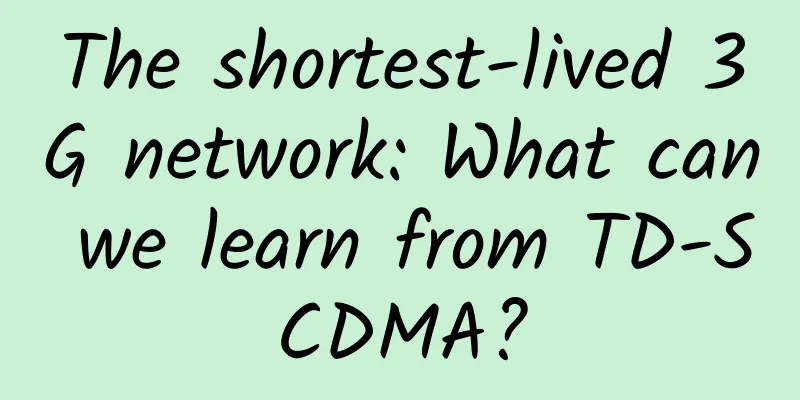There are traitors among us! The nervous system is not only a victim of cancer, but also a guide

|
The nervous system affects almost all tissues of an organism, and for cancer, scientists have long believed that the nervous system is a victim, but research in the past 30 years has found that the nervous system can actively participate in regulating the occurrence and development of malignant tumors. This is 150 years after the first discovery of the connection between cancer and the nervous system. Today, exploring the interaction between cancer and the nervous system has become a cutting-edge hotspot, and this is cancer neurology. People have found that cancer cells can use the nervous system to promote their growth and spread, and even change the function of the nervous system to create a microenvironment for its growth. There are still too many unsolved mysteries in this field, and of course it also brings new opportunities for cancer treatment. Written by Gu Shuchen (Institute of Life Sciences, Zhejiang University) Cancer, a general term for malignant tumors, is often mentioned with fear. Although people have been studying cancer since 1912 when Gaston Odin, a Parisian doctor, first isolated cancer cells from tumors, we still have not uncovered the full picture of cancer and cannot completely conquer it. In the past decade, scientists have realized that cancer is not just a local lesion, but a systemic problem involving the entire organism - cancer cells create an ecosystem suitable for their survival to help them grow and spread to new places. Therefore, oncogenes and tumor microenvironments (referring to cancer cells and the surrounding microenvironment in which they exist, including immune cells, endothelial cells, fibroblasts, and other cell types) have always been the top priority of cancer research. Although they are indeed very important in the occurrence and development of cancer, this is not complete. For example, the nervous system has not been mentioned for a long time. Figure 1 3D cell imaging shows how nerve cells (magenta) interact with cancer cells (green). Image source: Reference [6] Cancer and nervous system connection discovered From a neurological point of view, the brain coordinates all chemical processes that occur in our body and is the main regulator of the body. The brain collects information about the body through chemical signals in the nervous system and blood circulation, analyzes this information, and transmits chemical signals through neurons to different organs, muscles and glands, thereby affecting the operation of these tissues and organs. The nervous system controls all activities of normal tissues, such as growth, shrinkage, or any other process. The development of cancer cells also requires these functions, and logically, they also need the support of the nervous system. In fact, scientists discovered the connection between cancer cells and neurons very early. In the mid-19th century, French anatomist and pathologist Jean Cruveilhier described a case of breast cancer invading the cranial nerves responsible for facial movement and sensation [1]. The cancer cells shuttled around the nerves and then spread. He believed that this phenomenon was a sign of invasive tumors and indicated that the patient's health was poor. This was the first description of perineural invasion. But for a long time afterwards, scientists and doctors believed that the nervous system was a “victim”, that cancer cells had destroyed its structure, and that the nervous system passively served as a highway for transporting cancer cells and their associated pain. It wasn’t until the late 1990s that Professor Gustavo Ayala, now at the University of Texas Health Science Center, began to delve deeper into this interaction. He found that nerves were not just passive “victims”; they actively sought to establish connections with cancer. He placed the nerves of mice in a dish filled with human prostate cancer cells, and within 24 hours, the nerves began to grow small branches called neurons toward the cancer cells. And once these neurons came into contact with the cancer cells, the cancer cells moved along the nerves until they reached the nerve cell bodies [2] . A 2008 study also found that prostate cancers contained more nerve fibers (axons) than healthy prostate samples [3]. This suggested that the cancer cells were taking advantage of the nervous system. As a result, the academic community began to pay attention to the relationship between the nervous system and cancer. A 2013 study confirmed that severing the connection between cancer cells and the nervous system in mice could halt the disease[4] . In the following years, a large number of studies showed that the same thing happened in cancers in other parts of the body, including gastric cancer, pancreatic cancer, and skin cancer [5]. A paper published in Nature in 2023, “Glioblastoma remodelling of human neural circuits decreases survival”, showed that cancer cells can even connect themselves to neural circuits, directly receiving stimulation from neurons and promoting tumor growth[6]. Even more “horrifying” is that people’s conscious thinking and mental activities through language mechanisms (all of which are neural activities) seem to promote the occurrence and development of gliomas. Cancer and the Nervous System Waltz With the development of scientific and technological means, researchers have gradually uncovered the mystery of the interaction between cancer and the nervous system. They found that cancer cells in certain cancers can not only send signals to induce nerve fibers to grow toward cancer cells, but also use existing nerve pathways to allow cancer cells to spread to other organs. In addition, cancer cells can also affect the function of nerve cells and even change their biological state to adapt to the growth needs of the cancer cells themselves. Scientists have also found that cancers in certain organs have a special preference for nerves. For example, breast cancer and prostate cancer cancer cells tend to find and invade nerves and spread through nerves, as if there is some kind of secret deal between nerve endings and tumors. Cancer cells have been found to effectively hijack the nervous system to support their growth in three ways: by releasing electrical signals, by making direct connections through neurons, and by releasing nerve growth factors. Two articles published in Nature in 2019 [7, 8] both confirmed that glioma cells are electrophysiologically active. They can not only generate electrical signals, but also receive and respond to electrical signals from neurons. Cancer cells use this exchange of electrical signals to promote their own growth, spread, and metastasis to other organs. At the same time, these studies also confirmed that glioma cells can mimic the behavior of neurons to form structures similar to synapses, thereby establishing a direct physical connection with the nervous system. Through this camouflage, cancer cells can steal many signal molecules, which in turn promote their own growth. This type of cancer cell that can mimic neurons is not only found in gliomas in the brain, but also in breast cancer [9]. Other studies have found that pancreatic cancer can secrete nerve growth factor (NGF) when it lacks energy, driving the axons of neuronal cells to secrete serine, providing nutritional support for pancreatic cancer cells [10]. Figure 2 Neuron-glioma interactions in the central nervous system. Image source: Reference [5] In addition to cancer's "hijacking" of the nervous system, the nervous system can also promote cancer growth by providing a microenvironment suitable for cancer growth and inhibiting immune system surveillance. For example, neurogenic factors secreted by nerves, such as nerve growth factor (NGF) [11] and brain-derived neurotrophic factor (BDNF) [12], can directly act on cancer cells and promote their survival and spread. The invasion of nerve fibers can also promote angiogenesis, provide more nutrients to cancer cells in the tumor, and accelerate their growth rate [13] . Some neurotransmitters and neuropeptides secreted by nerve cells, such as norepinephrine and gamma-aminobutyric acid (GABA), can inhibit the activity of immune cells and reduce their attack on cancer cells. This inhibitory effect is not limited to the local immune response of the tumor, but also affects the immune status of the whole body, allowing cancer cells to grow and spread in a relatively "safe" environment [12] . In the case of chronic stress, the body also regulates the immune response by activating the sympathetic nervous system. In this state, immune cells show lower responsiveness to tumors, creating conditions for the growth of cancer cells [14]. But nerves do not always “assist” cancer growth. Because the nervous system itself has different types and performs different functions, their effects on cancer are complex and can even exhibit “contradictory” behaviors. For example, in the pancreas, sympathetic nerves participate in a vicious feedforward loop that promotes cancer cell growth, but parasympathetic nerves, which are responsible for the “rest and digest” function, send chemical messages to prevent the development of the disease[15] . In gastric cancer, parasympathetic nerve signals have the opposite effect, promoting cancer cell growth [16] . In prostate cancer, both types of nerves “help” cancer cells, with sympathetic nerves providing assistance in the early stages of cancer development and parasympathetic nerves promoting the spread of cancer cells in the later stages [17]. These studies show that each type of cancer interacts with the nervous system in a slightly different way, requiring targeted research and treatment. Hope for treatment Research on the interaction between cancer and the nervous system is of great significance for cancer treatment. It not only provides a possible explanation for some current phenomena, such as "chemo brain" (which refers to the side effects of cancer patients receiving chemotherapy, such as memory loss and other cognitive function decline), but more importantly, these studies can provide us with ideas for developing new cancer treatments. For example, developing drugs that block the transmission of neural signals to cancer cells, thereby inhibiting the growth of cancer cells; or using neural blocking technology or surgical methods to cut off the physical connection between tumors and the nervous system. This method has shown potential in the treatment of some cancers [18] . Some existing nervous system drugs, such as β-blockers and antidepressants, have also been shown to inhibit the growth of cancer cells in mouse experiments [18]. The development and application of these treatments provide new hope for cancer patients. As our understanding of the interaction between cancer and the nervous system continues to deepen, there are still many new areas to explore: how different cancer cells specifically regulate the function of nerve cells, and the specific impact of this regulation on the progression of cancer. In addition, the impact of the nervous system on the cancer microenvironment, especially how to regulate the tumor immune microenvironment through the nervous system, will also be another important area of future research. "Cancer Biography" wrote: "Every biography faces the death of the protagonist. So is the end of cancer possible in the future? Is it possible to eradicate this disease from our bodies and society forever?" As for the future of cancer, at least there is an area that urgently needs to be explored, which may bring new breakthroughs in conquering cancer. References [1] Cruveilhier J. Maladies des nerfs. 2nd edition, Part 35. Paris: Baillière, 1835: 3. [2] Ayala, GE et al. Prostate 49, 213–223 (2001). [3] Ayala, GE et al. Clin. Cancer Res. 14, 7593–7603 (2008). [4] Magnon, C. et al. Science 341, 1236361 (2013). [5] Mauffrey, P. et al. Nature 569, 672–678 (2019). [6] Krishna, S. et al. Nature 617, 599–607 (2023). [7] Venkatesh, HS et al. Nature 573, 539–545 (2019). [8] Venkataramani, V. et al. Nature 573, 532–538 (2019). [9] Zeng, Q. et al. Nature 573, 526–531 (2019). [10] Banh RS, et al. Cell. Nov 25;183(5):1202-1218.e25 (2020). [11] Lin H, et al. Mol Med Rep. Apr;23(4):288 (2021). [12] Balood, M. et al. Nature 611, 405–412 (2022). [13] Huang D, et al. Nat Cell Biol. Feb;24(2):230-241 (2022). [14] Wentao Tian, et al. Front Cell Dev Biol. Nov 19;9:777018 (2021). [15] Renz BW, et al. Cancer Discov 8:1458–73 (2018). [16] Zhao CM, et al. Sci Transl Med 6:250ra115 (2014). [17] Magnon C, et al. Science 341:1236361 (2013). [18] Winkler F. et al. Cell. Apr 13;186(8):1689-1707 (2023). This article is supported by the Science Popularization China Starry Sky Project Produced by: China Association for Science and Technology Department of Science Popularization Producer: China Science and Technology Press Co., Ltd., Beijing Zhongke Xinghe Culture Media Co., Ltd. Special Tips 1. Go to the "Featured Column" at the bottom of the menu of the "Fanpu" WeChat public account to read a series of popular science articles on different topics. 2. Fanpu provides a function to search articles by month. Follow the official account and reply with the four-digit year + month, such as "1903", to get the article index for March 2019, and so on. Copyright statement: Personal forwarding is welcome. Any form of media or organization is not allowed to reprint or excerpt without authorization. For reprint authorization, please contact the backstage of the "Fanpu" WeChat public account. |
>>: Scientists discovered a 4,000-year-old lipstick whose ingredients are similar to today's
Recommend
How to move forward on the road to subverting the education industry under the comprehensive impact of STEAM and Makeblock?
In May this year, at the Google IO 2016 Developer...
It is a foregone conclusion that the next generation of Android will include gesture controls, but how will it interact?
[[226318]] The next generation of Android operati...
Where to buy Qunar? How to use vouchers to attract new users and promote their activation?
There is less than a month left until Chinese Val...
Is there a black hole at the center of the Milky Way? The photo was just revealed!
Do you like reading comics? What? Do you want to ...
Android watch high-definition Korean drama permanent membership version_Resource headlines
Login has been modified to show permanent members...
Detailed explanation of "old customers bring new customers to share": a breakthrough in user growth
Before talking about the method of “old employees...
Share a very profitable project photo resource station monetization project
Hello everyone, yesterday the editor shared with ...
[Case] How did her community achieve 40 million users in a year?
In the past six months, many mobile community app...
User operation: 8 tricks for user portrait model!
User portraits are a way of describing and depict...
The official TV version of "Three Kingdoms Heroes" is launched
Speaking of Three Kingdoms games, KT Pants-Taking...
All Tibetan areas in Sichuan have been lifted out of poverty! How did the local government do it?
On February 18, the Sichuan Provincial Government...
Why can’t we retain new users? Here are 4 best solutions
Why is it that even though we have been attractin...
Apple internal document introduces Apple SIM card: one card with multiple numbers
After the launch of the new iPad in October, Appl...
“The sky is vast, the wilderness is boundless”, what important role does agriculture and animal husbandry play in the sea?
When it comes to ranches, everyone will think of ...
DianTao APP Product Analysis
Let’s first answer a core question: who does live...









